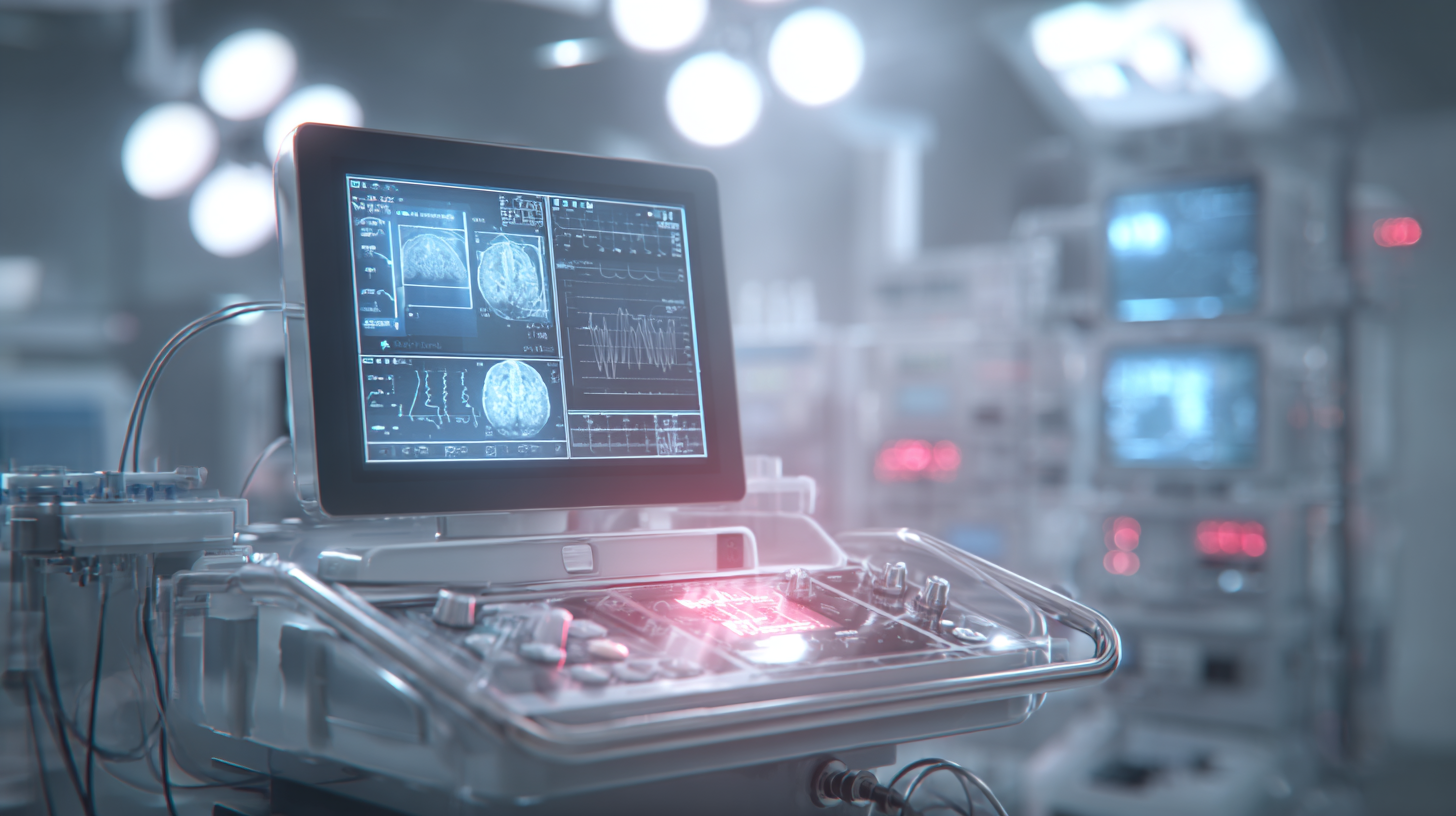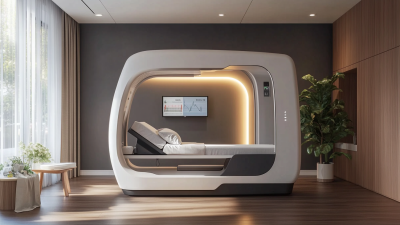Advancements in Medical Devices: How Technology is Reshaping Patient Care and Treatment
The field of healthcare is undergoing a transformative shift, driven largely by advancements in medical devices that enhance patient care and treatment methodologies. According to a report from the International Medical Device Regulators Forum, the global medical device market is expected to reach approximately $612 billion by 2025, with a compound annual growth rate of around 5.4%. This growth is fueled by innovations such as wearable health monitors, telemedicine equipment, and smart implants, which not only improve patient monitoring but also facilitate more personalized treatment plans. Furthermore, a study from McKinsey & Company highlights that digital technologies, including AI and machine learning, are significantly optimizing medical device functionality, leading to enhanced diagnostic accuracy and treatment outcomes. As these technologies continue to evolve, they are reshaping the landscape of healthcare delivery, emphasizing the critical role of medical devices in improving overall patient care.

The Impact of Wearable Health Monitors on Patient Engagement
Wearable health monitors have revolutionized the way patients engage with their health. These devices, which can track everything from heart rate and sleep patterns to physical activity levels, empower individuals to take an active role in their healthcare journey. By providing real-time data, wearables facilitate informed discussions between patients and healthcare providers, leading to more personalized treatment plans. The convenience of having health metrics at one's fingertips encourages users to stay committed to their wellness goals.
Tip: To maximize the benefits of wearable health monitors, choose a device that fits your lifestyle and health needs. Ensure it has features that align with your health management goals, such as heart rate monitoring, exercise tracking, or sleep analysis.
Moreover, the impact of wearable technology extends beyond individual use. Communities and healthcare systems can leverage aggregated data from these devices to identify health trends and devise targeted interventions. This collective insight not only enhances patient care but also fosters a proactive approach to public health management.
Tip: Regularly sync your device with health applications and share your data with your healthcare provider. This transparency can enhance your treatment and lead to better health outcomes.
Advancements in Medical Devices: How Technology is Reshaping Patient Care and Treatment - The Impact of Wearable Health Monitors on Patient Engagement
| Dimension | Description | Impact on Patient Engagement | Usage Statistics (%) |
|---|---|---|---|
| Mobility Tracking | Monitors physical activity levels through steps counted and distance traveled. | Encourages patients to stay active, leading to better health outcomes. | 65% |
| Heart Rate Monitoring | Tracks heart rate variability and resting heart rates. | Promotes awareness of cardiovascular health, leading to timely interventions. | 70% |
| Sleep Quality Assessment | Analyzes sleep patterns and duration. | Encourages patients to address sleep issues, improving overall health. | 60% |
| Medication Adherence | Reminds patients to take medications on time through notifications. | Increases adherence to treatment plans, improving health outcomes. | 75% |
| Telehealth Integration | Facilitates virtual consultations using connected devices. | Enhances access to healthcare, encouraging more patients to seek care. | 80% |
Innovative Surgical Tools Enhancing Precision in Procedures
The landscape of surgical procedures is evolving rapidly, thanks to innovative surgical tools that enhance precision and improve patient outcomes. Advanced technologies like robotic-assisted surgery, 3D imaging, and minimally invasive instruments allow surgeons to perform complex procedures with meticulous accuracy. These tools not only reduce the risk of complications but also minimize recovery times, providing significant benefits to patients.
Tips for Surgeons: Embracing these innovative tools involves staying updated with the latest technology trends. Attend workshops and training sessions focused on new surgical instruments to enhance your skills. Additionally, collaborating with tech developers can give you insights into how these tools function and how best to integrate them into your practice.
Patients also have a role in this evolution. It’s essential for them to be informed about the latest surgical technologies available for their conditions. Discussing options with healthcare providers can lead to personalized treatment plans that leverage these advanced tools, ensuring the best possible care. Adopting a proactive approach and understanding the technology will empower patients in their healthcare journey.
Advancements in Surgical Tools: Precision in Procedures
This chart illustrates the advancements in various innovative surgical tools and their impact on procedural precision over recent years.
Telemedicine Devices: Bridging the Gap Between Patients and Providers
 Telemedicine is playing a crucial role in bridging the healthcare gap, especially for underserved populations. Recent reports indicate that 74% of cancer patients rated their telemedicine visits as satisfactory or even better than traditional in-person consultations. This highlights the remarkable effectiveness of remote healthcare services in providing critical support where it is needed most. In rural areas, telemedicine networks have been instrumental since their inception in 2009, allowing patients previously deprived of adequate medical care to access doctors and specialists through digital platforms.
Telemedicine is playing a crucial role in bridging the healthcare gap, especially for underserved populations. Recent reports indicate that 74% of cancer patients rated their telemedicine visits as satisfactory or even better than traditional in-person consultations. This highlights the remarkable effectiveness of remote healthcare services in providing critical support where it is needed most. In rural areas, telemedicine networks have been instrumental since their inception in 2009, allowing patients previously deprived of adequate medical care to access doctors and specialists through digital platforms.
The rapid advancement in telehealth technologies, compounded by the COVID-19 pandemic, has transformed how healthcare is delivered. Digital tools such as video calls and mobile applications facilitate direct connections between patients and providers, enabling timely consultations and continuous monitoring. According to projections, the Asia Pacific digital health market is expected to generate revenue of USD 180.94 billion by 2033, largely fueled by the growing adoption of telemedicine and remote patient monitoring systems.
Tips: To make the most of telehealth services, ensure your technology is up-to-date, familiarize yourself with the digital tools used by your healthcare provider, and maintain regular communication through these platforms. Engaging with telemedicine can significantly enhance your access to quality healthcare, especially in areas where traditional services may be lacking.
Smart Implantable Devices: Revolutionizing Chronic Disease Management
Recent advancements in smart implantable devices are fundamentally transforming chronic disease management by enabling real-time monitoring and personalized treatment plans. The integration of advanced sensor technologies allows these devices to track vital signs continuously, providing patients and healthcare providers with critical data to manage conditions more effectively. For instance, emerging non-invasive biochemical wearables show significant potential in monitoring biochemical parameters continuously, thereby enhancing the accuracy of chronic disease management, particularly in conditions such as diabetes and cardiovascular disorders.
Moreover, the use of microelectromechanical systems (MEMS) accelerometers in healthcare devices has emerged as a game-changer, facilitating the collection of movement and activity data that can lead to tailored interventions. With the growth of these technologies, healthcare is evolving toward a more proactive model, where monitoring and intervention are seamlessly integrated into patients' daily lives. As research initiatives, such as those led by major universities, aim to address chronic pain and other health issues using these innovative technologies, the future of patient care looks promisingly efficient and personalized, paving the way for improved outcomes and a better quality of life for patients managing chronic diseases.
AI and Machine Learning in Diagnosing and Treating Medical Conditions
The incorporation of artificial intelligence (AI) and machine learning (ML) into healthcare is revolutionizing the way medical conditions are diagnosed and treated. According to a report by the World Health Organization, approximately 80% of healthcare leaders plan to invest in AI technology within the next five years. This shift is primarily fueled by the ability of AI to analyze vast amounts of data quickly, enhancing diagnostic accuracy and treatment options. For instance, AI algorithms can now process and interpret medical images with a precision that rivals human radiologists, significantly reducing diagnostic errors.

Moreover, machine learning is enabling personalized medicine, allowing treatments to be tailored to individual patient profiles. A study published in the Journal of Personalized Medicine revealed that AI-driven predictive analytics could improve treatment efficacy by up to 30% in managing chronic diseases like diabetes and heart conditions. By leveraging these technologies, healthcare providers can not only enhance patient outcomes but also allocate resources more efficiently, ultimately transforming the landscape of patient care and treatment in unprecedented ways.
Related Posts
-

Chinese Excellence in Health Equipment Manufacturing for Global Leaders
-

Unlocking Cost Savings: How Global Procurement of Surgical Supplies Can Transform Healthcare Efficiency
-

Global Market Outlook 2025: Insights and Innovations in Health Equipment for International Buyers
-

Ultimate Resource for Global Buyers in Medical Equipment Procurement
-

How to Choose the Best Healthcare Equipment for Your Facility: A Step-by-Step Guide
-

Evaluating the Advantages of Different Types of Medical Devices for Healthcare Applications
